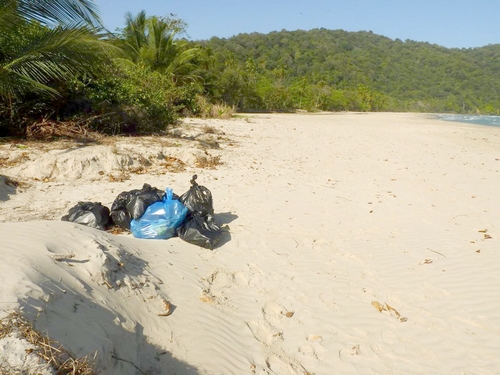July 2016
July’s general meeting featured our annual member’s evening, in which members present to the memberships on various topics including drone footage from the L’Anglais Mud Volcano in Palo Seco, the use of the datwan (traditional toothbrush) in T&T, ethospecies, the natural history of Grenada, one man’s journey to discover the mushrooms of T&T and a short update on the Club’s 125th strategic planning session.
On July 17th, The birdwatching group journeyed to Plum Mitan and Caltoo Trace in East Trinidad. Members had to hit the road early to get on site as early as 5am but were rewarded with Blue Ground Dove and other lovely birds. The final tally: 55 species
As part of our 125th Anniversary celebrations, the July trip was a night time turtle watching trip to Matura in recognition of the Club’s turtle tagging project. Starting in 1963, the TTFNC first investigated reports and confirmed that a large number of leatherback turtles were being killed on the Matura beach. Beach patrols continued at Matura during 1964 and in 1965, Peter Bacon, the Vice President of the Club, was appointed coordinator of the Club’s Turtle Project . The Club commenced a programme of regular patrols on the beaches beaches at Matura, Fishing Pond, Big Bay, Toco, Grand Riviere, Maracas and Las Cuevas. In 1970, the Club began a Turtle Tagging Project using equipment supplied by the University of Florida at Gainsville. During the next eleven nesting seasons 333 leatherbacks were tagged. In May 1973, based on its many years of observation and information gathering, the Club submit- ted a report prepared by Dr. Bacon to the Minister of Agriculture, Lands and Fisheries entitled “The status of sea turtles in Trinidad and Tobago”
August 2016
In August, guest speaker Jack Torresdal spoke to members about the elusive Golden Tree Frog. Traditionally believed to be an endemic to the cloud forests of Trinidad, the frog has now been discovered in Venezuela. Jack spoke about the research that his group has been doing on the tree frogs and discussed some of their findings.
The field trip for this month was the long awaited annual overnight camping trip to Gran Tacaribe where members are able to explore a range of habitats including snorkelling in the shallow rocky reef, hiking to Madamas and exploring the forest. Not to mention a chance to kick back and relax on one of Trinidad’s most beautiful beaches!
Orange Valley was the target of the birders in August as they tackled the unenviable task of shorebird identification. It was a good learning experience for all as they distinguished between tricky species such as Western, Least and Semipalmated Sandpipers.
September 2016
In recognition of our 125th Anniversary, a special dinner was held at the Namaste India Restaurant. The all vegetarian course had some members uncertain but they were pleasantly surprised! Members were recognised for their contribution to the Club over the years and a good time was had by all.
The 125th Anniversary’s School Art Competition was really the highlight for September. With over 400 entries, the judges really had their work cut out for them! The winners were recognised at a prize giving ceremony where their fantastic work was on display. See link for some of the artwork.
Another long awaited trip is the Club’s annual geology trip. The focus was on onshore geological features related to the petrochemical sector in South West Trinidad. The group visited Pt Fortin to see evidence of the Los Bajos fault, the Stollmeyer Oilsand Quarry near Guapo, an active oil extraction facility in Parrylands and the Pitch Lake.
































